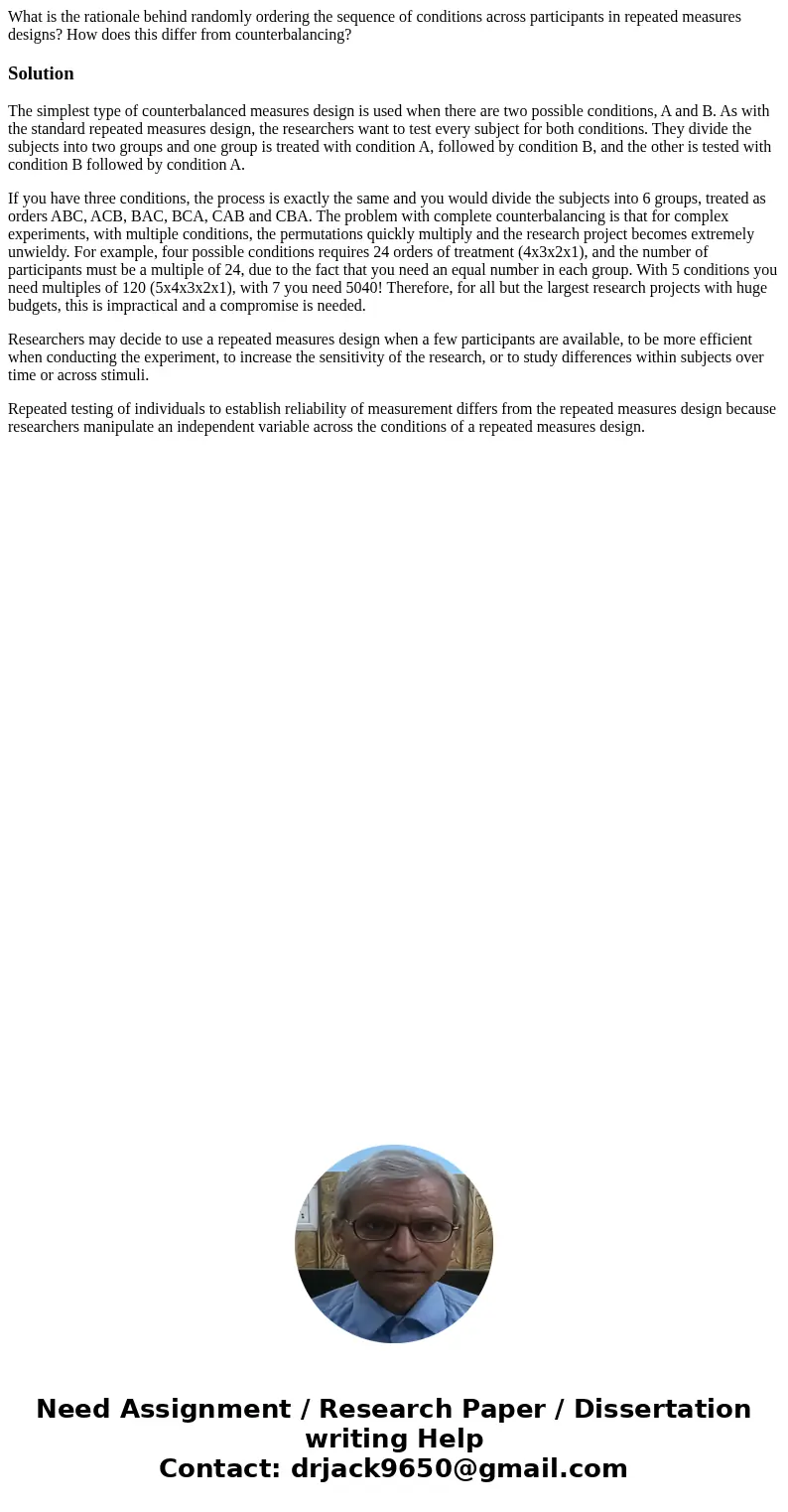What is the rationale behind randomly ordering the sequence
What is the rationale behind randomly ordering the sequence of conditions across participants in repeated measures designs? How does this differ from counterbalancing?
Solution
The simplest type of counterbalanced measures design is used when there are two possible conditions, A and B. As with the standard repeated measures design, the researchers want to test every subject for both conditions. They divide the subjects into two groups and one group is treated with condition A, followed by condition B, and the other is tested with condition B followed by condition A.
If you have three conditions, the process is exactly the same and you would divide the subjects into 6 groups, treated as orders ABC, ACB, BAC, BCA, CAB and CBA. The problem with complete counterbalancing is that for complex experiments, with multiple conditions, the permutations quickly multiply and the research project becomes extremely unwieldy. For example, four possible conditions requires 24 orders of treatment (4x3x2x1), and the number of participants must be a multiple of 24, due to the fact that you need an equal number in each group. With 5 conditions you need multiples of 120 (5x4x3x2x1), with 7 you need 5040! Therefore, for all but the largest research projects with huge budgets, this is impractical and a compromise is needed.
Researchers may decide to use a repeated measures design when a few participants are available, to be more efficient when conducting the experiment, to increase the sensitivity of the research, or to study differences within subjects over time or across stimuli.
Repeated testing of individuals to establish reliability of measurement differs from the repeated measures design because researchers manipulate an independent variable across the conditions of a repeated measures design.

 Homework Sourse
Homework Sourse